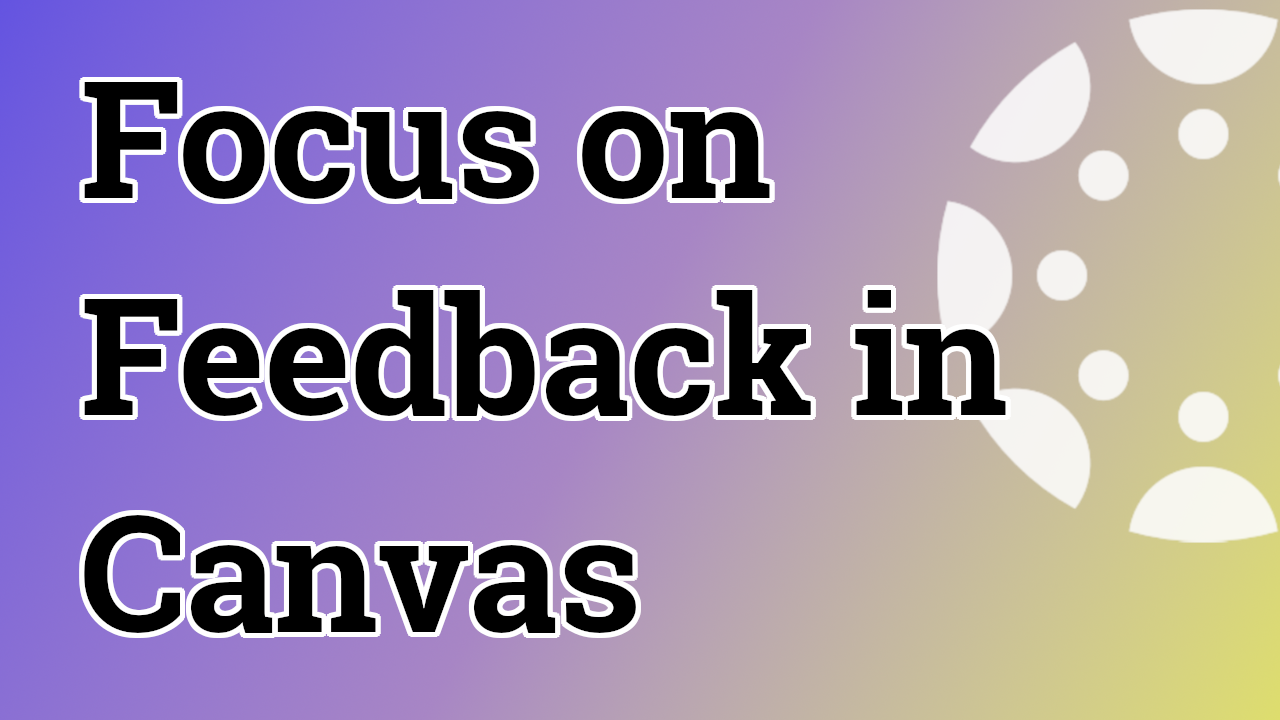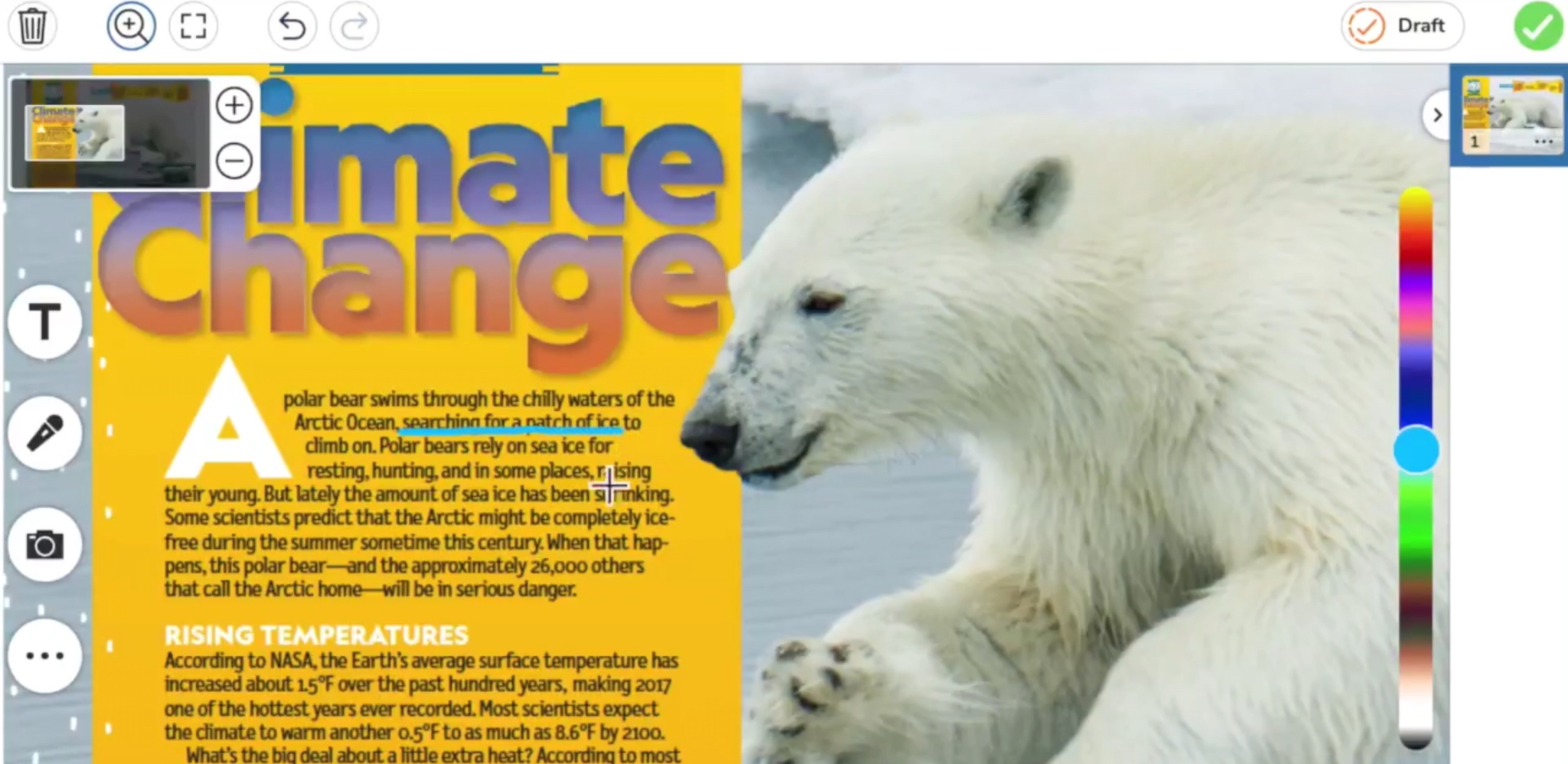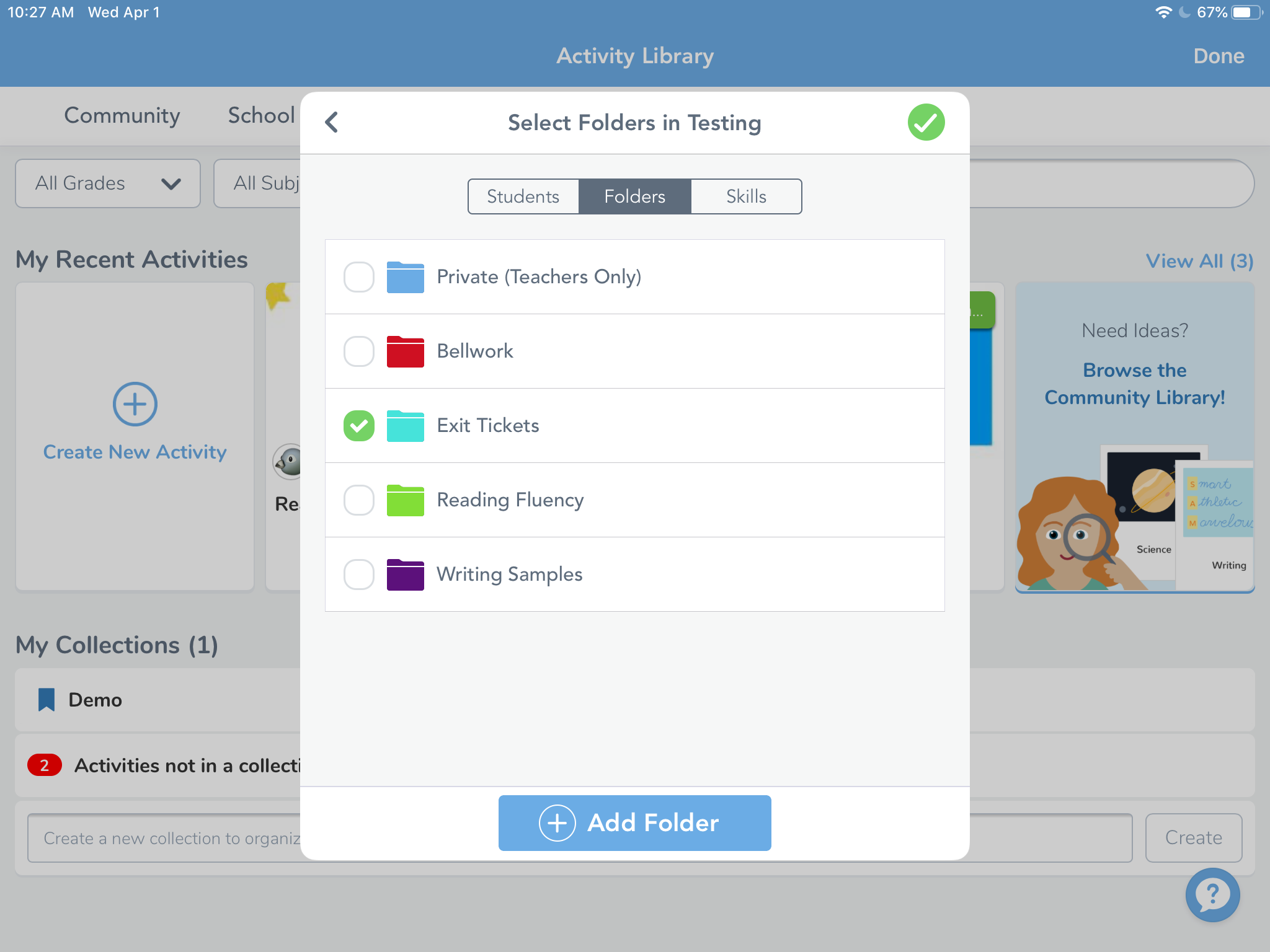Canvas makes it easy to allow students to submit multiple times to the same assignment. This helps you move away from completion and compliance for student work toward a feedback and revision cycle, focusing on improvement and tracking growth.
There are several ways to do this in Canvas and we’ll highlight some of the easier methods here along with why you might want to do this in your class.
Quizzes & Tests
An obvious first stop, do you allow quiz or test retakes? If the answer is “no,” let’s consider why for a few minutes.
Deadlines and accountability are important. However, the purpose of assessment is to allow students and teachers a snapshot of learning at a particular point in time. Quizzes and tests, when used effectively and strategically, can help you pinpoint exactly what a student needs more help with within a topic. In other words, quizzes and tests are part of the learning process, not the end of learning in that unit.
Limit the Results
Let’s make the quiz results a more powerful prompt for review. You can limit the quiz results to immediately after the quiz. You should also hide the correct answers for questions they got wrong. Those items become the study set for the next attempt! “Use the test to take the test” is more than a quip; quiz feedback can be a good indicator tool for what areas a student needs more help with in a controlled setting.

If you’re using New Quizzes, you can also set a delay between attempts. Using a limited view of the results and setting a wait period prevents students from turning right around to try the quiz again. Prompt them to focus on weak areas before the second (or nth) attempt.
Question Bank Super Powers
My preferred method of managing retakes is to use question banks. I’ve written about banks before, but at a minimum, they give you a chance to create infinite combinations of questions which can be pulled into a quiz or test.
Your questions banks live in the three-dot menu on the Quizzes page. When you open it, you may have a bank already called Unfiled Questions. These come from quizzes you’ve made in the course and can be filed into other banks. Instead of writing questions right in a quiz, start by making a new bank and then add some questions there. I recommend organizing by topic or standard for easier filtering later, but you can do it by chapter or unit to get started.

In your quiz, you can now use the Question Group tool. This allows you to pull items from banks at random into your quiz! That means for every time the quiz is loaded, by different students or a student doing a retake, they’ll be given different items on the topic.
Assignment Rubrics
Assignments can also be submitted multiple times. Using rubrics can help you give actionable, specific feedback to students on how to improve with each submission. Grades alone are not enough to prompt revision. Tell students that revisions are needed and give them guidance on what to look at to make those revisions.
While using point-based rubrics is helpful at times, I like to use single-point rubrics when I’m looking for revision and more submissions. Start by making an assignment, making sure to allow multiple submissions. When you’re done, save it.
Click on +Rubric on the assignment overview page and create new criteria for each aspect of the assignment which will be getting feedback. Try to limit it to three or four criteria so it doesn’t become overwhelming.

Single-point rubrics rely on specific and actionable feedback. To do that, make sure to check the box for free-form comments. For each revision, you’re considering the student work and giving them feedback on each criterion, marking a 1 or 0 (single point!) on the rubric. Any rubric item scored 0 should have feedback for revision. Our goal is to give students multiple opportunities to show understanding.
Hide Assignment Grades
If you give an assignment back to a student with feedback and a score written, most students ignore the feedback and look at the number. Simply hiding the assignment score from students until you’ve reached the “final” submission is a way to focus on revision and refinement.
In Canvas, you can give feedback through submission comments on student work without assigning a grade. When you make a comment, it is immediately returned to students and they can refine and resubmit the assignment.
You can also control when that feedback is returned by setting a grade posting policy. In your gradebook, click on an assignment and then click Grade Posting Policy. Set it to Manual and click Save. This allows you to score student work and release those scores individually or by section as students demonstrate mastery.
When you’re ready to post grades, use the three-dot menu on the assignment in Grades and click on Post grades. Send scores to students who have demonstrated mastery and allow them to move on. Continue to work with others as needed until they’ve shown their learning adequately. Note that if you have the manual policy on, you’ll need to post comments to students as well…they won’t see comments until their score has been released, even if the score is blank.
Multiple Submissions in the SpeedGrader
Now that we have multiple submissions, how do you manage those? The SpeedGrader allows you to choose which version of the submission you want to look at.
When there are multiple submissions, you can select each version in a dropdown menu in the top left corner. It will also load the score assigned (if any) or the rubric evaluation (if any) for that submissions, so you can compare versions.
Remember, revision is a process. The best version of the student work represents their learning, so that should be the grade submitted. Try to avoid averaging attempts or limiting to the last attempt because you start to introduce other variables into a figure which should represent what they know and can do.
Isn’t this way more work?
It certainly can be.
Focusing on feedback through reassessment means we have to make critical decisions about what we’re asking students to do and why. In other words, if you have an assignment that doesn’t actually ask students to demonstrate a skill or objective, you should drop that assignment.
Virtual learning is hard! Continuing with daily grind assignments that give no information about how students are processing your content is a waste of both your time and theirs. Focusing on feedback and bending Canvas to your ends will better serve our students across the board. By dropping the busy work, you can focus more of your energy on supporting students in fixing deficits and making learning gains.




I am at the beginning of understanding all of this. I see what can be done and now I need to spend some time working on implementing for the students.
There is a lot of information here. I am not sure that I understand it all but I plan on putting it to practice for the 2022-2023 school year.
Standard based grading is a good concept as long as the standards are clear and concise. I have found this year that some of the students or the majority of them need a refresher course in some basic academic skills. So I am hoping that we can add some of that into are overall learning lesson.